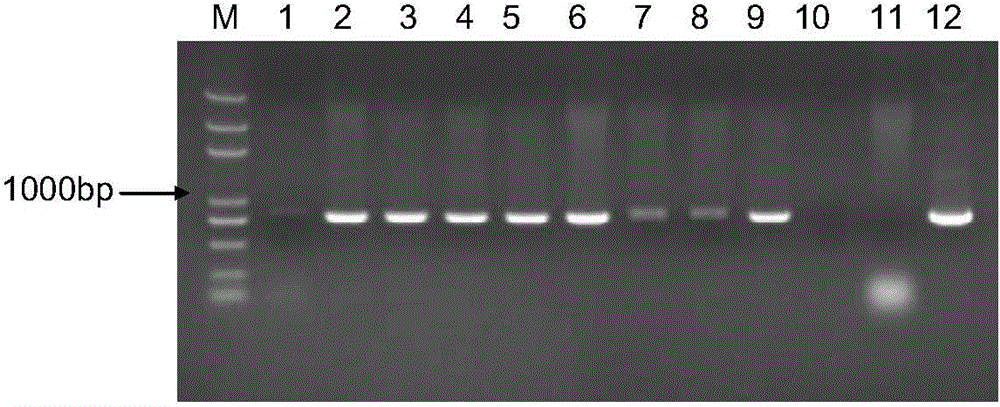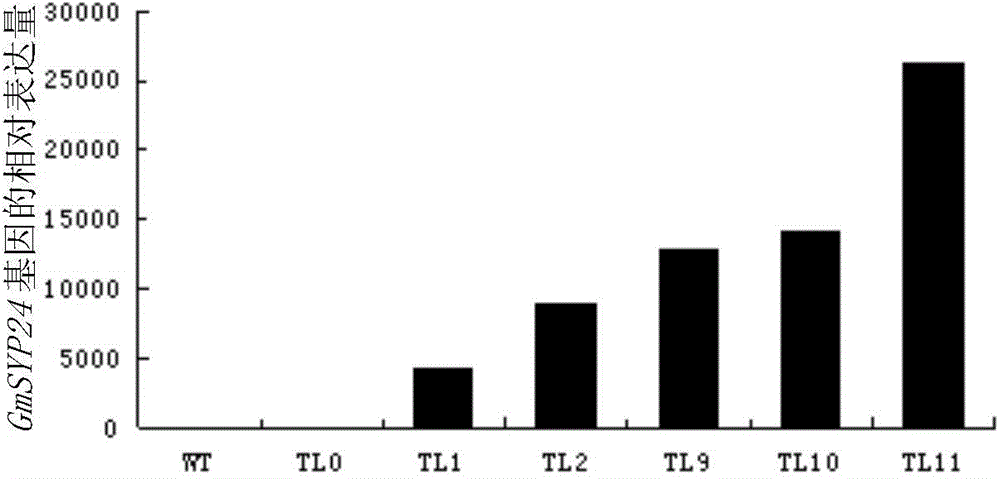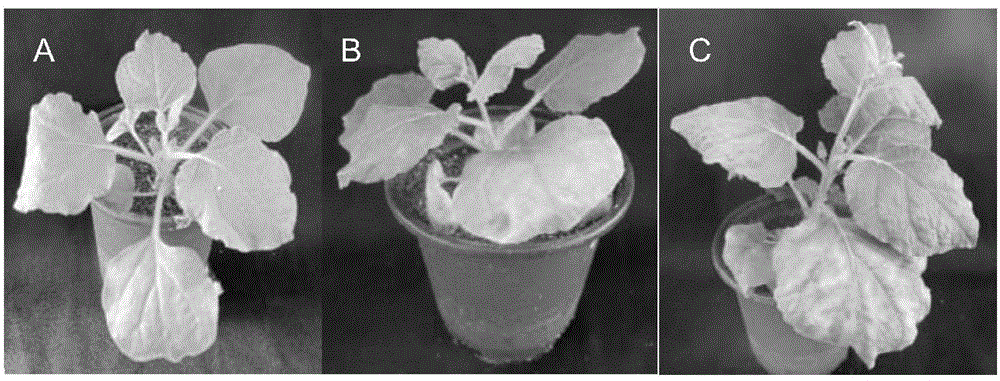Application of soybean protein and coding gene of the soybean protein in plant drought resistance adjustment
A technology encoding gene and transgenic plant is applied in the application field of soybean GmSYP24 protein and its encoding gene in regulating plant drought resistance, and can solve the problems of no drought resistance, high salt transgenic soybean, etc.
- Summary
- Abstract
- Description
- Claims
- Application Information
AI Technical Summary
Problems solved by technology
Method used
Image
Examples
Embodiment 1
[0039] Embodiment 1, the cloning of soybean GmSYP24 gene
[0040] The total RNA of soybean (Glycine max (L.) Merr.) variety Jindou 21 was extracted by Trizol method, and reverse-transcribed into cDNA, which was used as a template for PCR amplification using the following primers.
[0041] Upstream primer: 5'-ACATCATTTCCCACTCCCG-3' (position 1-19 of Sequence 1);
[0042] Downstream primer: 5'-GGACCTATGTCCAAAAGTAACCA-3' (reverse complement of positions 753-775 of Sequence 1).
[0043] Reaction system: template cDNA 2μL, upstream primer (10μmol / L) 0.5μL, downstream primer (10μmol / L) 0.5μL, 10×Buffer 2μL, magnesium chloride (25mM) 1.2μL, dNTPs (2.5mM) 0.4μL, DNA polymerase (5U / μL) 0.2 μL, make up to 20 μL with sterile water.
[0044] Reaction program: pre-denaturation at 94°C for 5 min; denaturation at 94°C for 0.5 min, annealing at 58°C for 0.5 min, extension at 72°C for 1 min, 30 cycles; final extension at 72°C for 10 min; storage at 4°C.
[0045] After the reaction, the tar...
Embodiment 2
[0047] Embodiment 2, the acquisition and identification of GmSYP24 transgenic tobacco
[0048] 1. Obtaining GmSYP24 transgenic tobacco
[0049] 1. Construction of recombinant expression vector pCXSN-GmSYP24
[0050] The pCXSN vector was digested with restriction endonuclease Xcm I to obtain a linear TA cloning vector with a 3' protruding T base. The digested pCXSN linear vector was ligated with the purified and recovered PCR product (sequence 1) obtained in Example 1.
[0051] Ligation system (10 μL): 1 μL of digested pCXSN vector, 4 μL of purified and recovered PCR product, and 5 μL of DNA ligase. Wherein, DNA ligase is a product of Takara Company, and its product catalog number is 6024.
[0052] React overnight at 16°C.
[0053] Transform the competent cells of Escherichia coli DH5α with 10 μL of the ligation product, spread evenly on the LB plates containing kanamycin, and incubate them upside down at 37°C for 12-16 hours. Pick the monoclonal colony on the transformati...
Embodiment 3
[0075] Embodiment 3, the drought resistance identification of GmSYP24 transgenic tobacco
[0076] The drought resistance of the five GmSYP24 transgenic tobacco homozygous plants TL1, TL2, TL9, TL10 and TL11 in Example 2 was identified according to the following method. The specific operation is as follows:
[0077] 1. Sterilize the seeds of 5 GmSYP24 transgenic tobacco homozygous plants TL1, TL2, TL9, TL10 and TL11, the pCXSN empty vector (TL0), and the non-transgenic wild-type tobacco (Nicotiana benthaminana.) In 1 / 2MS medium, culture in long-day light (16h light / 8h dark) at 22°C for 12 days. Each tobacco plant was supplied with normal water under the same conditions.
[0078] 2. Transplant each tobacco seedling into a nutrient soil for long-day sunshine (16h light / 8h dark), and cultivate under light at 22°C for 15 days. Each tobacco plant was supplied with normal water under the same conditions.
[0079] 3. Observe the phenotype of each tobacco plant, and take pictures a...
PUM
 Login to View More
Login to View More Abstract
Description
Claims
Application Information
 Login to View More
Login to View More - R&D
- Intellectual Property
- Life Sciences
- Materials
- Tech Scout
- Unparalleled Data Quality
- Higher Quality Content
- 60% Fewer Hallucinations
Browse by: Latest US Patents, China's latest patents, Technical Efficacy Thesaurus, Application Domain, Technology Topic, Popular Technical Reports.
© 2025 PatSnap. All rights reserved.Legal|Privacy policy|Modern Slavery Act Transparency Statement|Sitemap|About US| Contact US: help@patsnap.com



